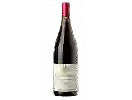
Winery François Saint-LôLes Palennes
In the mouth this red wine is a with a nice freshness.
This wine generally goes well with poultry, veal or game (deer, venison).
Taste structure of the Les Palennes from the Winery François Saint-Lô
Light | Bold | |
Smooth | Tannic | |
Dry | Sweet | |
Soft | Acidic |
In the mouth the Les Palennes of Winery François Saint-Lô in the region of Loire Valley is a with a nice freshness.
Wine flavors and olphactive analysis
Food and wine pairings with Les Palennes
Pairings that work perfectly with Les Palennes
Original food and wine pairings with Les Palennes
The Les Palennes of Winery François Saint-Lô matches generally quite well with dishes of veal, game (deer, venison) or poultry such as recipes of veal liver in vinegar, duck legs with green olives or chicken tagine with olives and potatoes.
Details and technical informations about Winery François Saint-Lô's Les Palennes.
Discover the grape variety: Ugni
Ugni blanc is a grape variety originating from Italy. It produces a variety of grape specially used for the elaboration of wine. It is rare to find this grape to eat on our tables. This variety of grape is characterized by large bunches and small to medium sized grapes. Ugni blanc can be found in many vineyards: South West, Cognac, Bordeaux, Provence & Corsica, Rhone valley, Languedoc & Roussillon, Armagnac, Loire valley, Savoie & Bugey, Beaujolais.
Informations about the Winery François Saint-Lô
The Winery François Saint-Lô is one of of the world's great estates. It offers 16 wines for sale in the of Loire Valley to come and discover on site or to buy online.
The wine region of Loire Valley
The Loire Valley is a key wine region in western France. It follows the course of the Loire River on its Long journey through the heart of France, from the inland hills of the Auvergne to the plains of the French Atlantic coast near Nantes (Muscadet country). Important in terms of quantity and quality, the region produces large quantities (about 4 million h/l each year) of everyday wines, as well as some of France's greatest wines. Diversity is another of the region's major assets; the styles of wine produced here range from the light, tangy Muscadet to the Sweet, honeyed Bonnezeaux, the Sparkling whites of Vouvray and the juicy, Tannic reds of Chinon and Saumur.
News related to this wine
At the heart of the terroirs of Mâcon-Mancey
Sequence from the video « At the heart of the Mâcon terroir » which offer a stroll at the heart of the Mâcon terroir. It offers a focus on Mâcon-Mancey, one of the 27 geographical denominations of the Mâcon appellation. Travel through the terroirs of the Mâcon appellation by watching the full video : https://www.youtube.com/watch?v=GF20y1aBZh8 Both are available in French and English. Our social media: Facebook: https://www.facebook.com/BourgogneWines Twitter: https://twitter.com/BourgogneWine ...
An overview of Mâcon plus a geographical denomination appellation
The Bourgogne Wine Board (BIVB) invites you to a survey of this vineyard where the 27 geographical denominations of the Mâcon appellation are produced. A unique journey to discover this region where the Romanesque churches punctuate the landscape and are the witnesses of the link between the vines and Christiannity. Cluny is the gatekeeper. Our social media: Facebook: https://www.facebook.com/BourgogneWines Twitter: https://twitter.com/BourgogneWines/ Instagram: https://www.instagram.com/vin ...
Geographical denomination: The first step towards the notion of terroir – Focus Mâcon
We created this photomontage, to show you the landscapes and the different characteristics of the 27 geographical denominations of the Mâcon appellation: Wine colors, grape varieties, soil specificities, surface area and production. You’ll become an expert on Mâcon wines! Our social media: Facebook: https://www.facebook.com/BourgogneWines Twitter: https://twitter.com/BourgogneWines/ Instagram: https://www.instagram.com/vinsdebourgogne/ LinkedIn: https://www.linkedin.com/company/bivb Find ...
The word of the wine: Tries (harvest by)
Harvesting in several successive passages to harvest at their optimal concentration the grapes affected by noble rot. They allow the production of great sweet wines.














